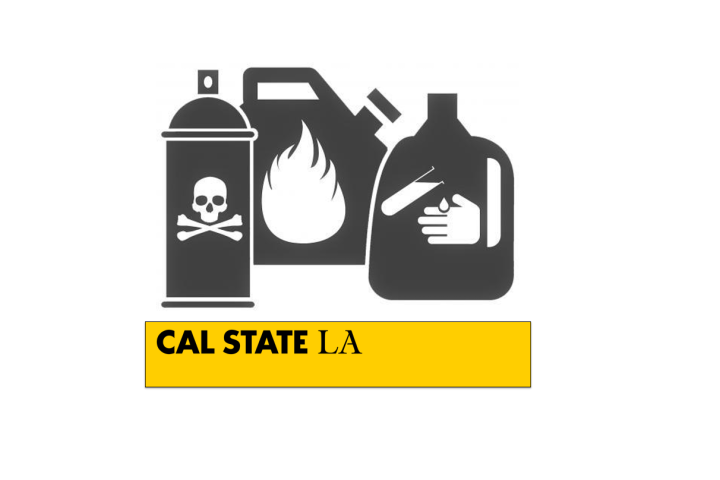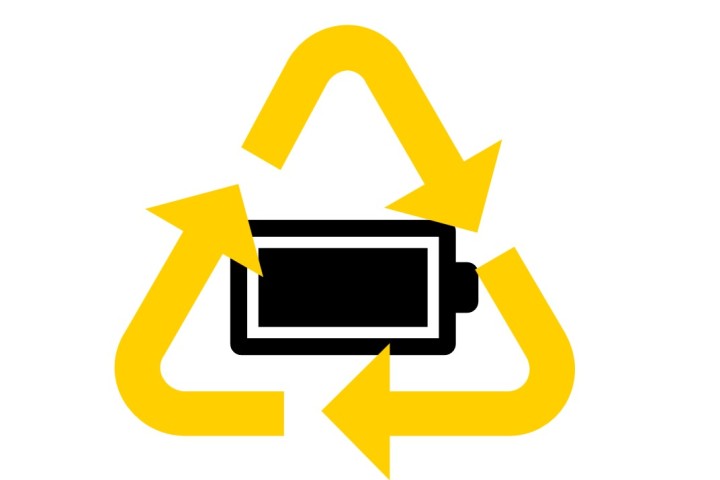Is it Hazardous Waste or Not?
In the state of California, if your waste meets one or more of the criteria below, it is classified as "hazardous waste." To verify whether your waste meets the criteria, you can search for your chemicals' Safety Data Sheets (SDS) using their CAS number or common name. The following sections are applicable, but not limited to: "Toxicological Information" or "Hazards Identification."
- Toxic Constituents or Chemicals of Concern (COC): If a waste contains concentrations of any of the thirty-seven toxic constituents or COCs that exceed Threshold Total Limit Concentrations (TTLCs) or Threshold Short-Term Limit Concentrations (STLCs), it is considered hazardous.
- Acute Oral LD50: If the waste's acute oral LD50 (the dose that is lethal to 50% of the test subjects) for laboratory rats is less than 2,500 mg of waste per kilogram of body weight, it is classified as hazardous.
- Acute Dermal LD50: If the waste's acute dermal LD50 (the dose that is lethal to 50% of the test subjects) for laboratory rabbits is less than 4,300 mg per kilogram of body weight, it is considered hazardous.
- Acute Inhalation LC50: If the waste's acute inhalation LC50 (the concentration that is lethal to 50% of the test subjects) for rats is less than 10,000 parts per million (ppm), it is classified as hazardous.
- Aquatic Inhalation LC50: If the waste's aquatic inhalation LC50 (the concentration that is lethal to 50% of the aquatic test organisms) is less than 500 milligrams per liter (mg/L), it is considered hazardous.
- OSHA Listed Carcinogens: If the waste contains any of the sixteen Occupational Safety and Health Administration (OSHA) listed carcinogens at levels exceeding 10 mg/kg (0.001 percent or ~ 10 parts per million), it is classified as hazardous.
- "New Threats" Criterion: If a waste has been shown through experience or testing to be hazardous to public health or the environment, it falls under the "new threats" criterion and is considered hazardous.
To arrange for proper disposal, you can make a request by selecting "Request for RMEHS Service" link below.
Hazardous Chemical Waste Disposal

Hazardous chemical wastes are either byproducts or chemical stock no longer in use that MUST BE collected by RMEHS for disposal, provided they are properly packaged and labeled. RMEHS will ensure that the waste materials are disposed of in an approved manner and that the documentation of the disposal is maintained.
When collecting hazardous chemical waste follow these procedures,
- Ensure that individual containers are labeled in accordance with the identification requirements (or individual contents) prior to adding waste to the container.
- Make sure hazardous waste containers are appropriate, sealed, and in good condition.
- Segregate hazardous waste from incompatible materials through distance or physical barriers such as placing the container in a secondary containment.
- Submit an EH&S Service Request (link to service request form) for hazardous waste pickup and removal.
Note: If unsure how to dispose of waste, please contact EHS at (909) 537-5179, complete a service request form, or refer to the Safety Data Sheets for more information on how to dispose of products. Strict regulations governing the disposal of hazardous wastes have been promulgated by the Environmental Protection Agency, Cal/EPA, and San Bernardino County Department of Health. Infractions of these regulations can lead to the civil and criminal prosecution and/ or fines. Therefore, it is imperative that these materials be disposed of in a responsible manner that aligns with regulatory standards.
Hazardous waste containers must be labeled when waste starts accumulating (i.e. as soon as the first drop of waste is put in the container), not when the container becomes full. All chemical waste containers MUST BE labeled with the following information:
- Accumulation start date: when the first drop of waste is placed into the container.
- Name, extension, and room number of lab supervisor and/or principal investigator (PI).
- List all constituents, including water, and estimate the concentration of each constituent.
- Do not use abbreviations or chemical formulas
- Complete the physical state of the waste (Solid, Liquid, Gas)
- Add the appropriate hazards and hazard class to the labels. Consult with the material's SDS to decide on the appropriate hazards.
- Do not combine incompatible waste.
In addition, the following precautions must be observed:
- DO NOT store incompatible waste containers in the same areas.
- Example: If you have two different waste streams that are incompatible with each other store them in different areas away from each other.
- DO NOT use incompatible containers for waste.
- Example: Accumulating a mineral acid in a hydrogen peroxide container or acids in a metal container.
Containers are considered empty when no material can be poured or scraped from it. The container must be California empty before disposing of it as regular waste.
Empty hazardous chemical containers may be disposed of as regular waste and must meet the following criteria.
Disposal of liquid hazardous chemical containers:
- No liquid can drain from the container when tilted in any direction.
- Collect any liquid in a separate waste container for proper hazardous waste management.
- Invert the container on a gray spill pad to collect any residual liquid and dispose of the gray spill pad as hazardous waste.
- Deface all labels with a dark pen or place a label around the container stating that EMPTY and the date it was emptied.
- When triple rinsing containers collect all the resulting liquid as waste.
- Containers can be recycled when completely dried and all labels are defaced.
To dispose of empty solid hazardous waste containers:
- There should be no solid hazardous material remaining that can feasibly be removed.
- The walls have no coated material on them, a thin layer of dried material is acceptable.
- Collect any residual solid waste in a separate waste container for proper disposal.
- Deface all labels with a dark pen or place a label around the container stating that EMPTY and the date it was emptied.
- The container can be recycled after removing, drying out, and defacing the labels
Before collecting waste, ensure all chemicals/materials are segregated by hazard class. Common examples of proper segregation are but not limited to:
- Acids from bases,
- Oxidizers from organic solvents,
- Cyanides from acids,
- Flammable liquids from acids, bases, oxidizers,
- Flammable solids from acids and oxidizers,
- Corrosive acids from flammable liquids, flammable solids, bases, oxidizers,
- Corrosive bases from oxidizers and acids, and
- Water-reactive from aqueous solutions and oxidizers.
For more information on how to segregate chemicals use the Cal State LA Chemical Segregation Table or submit a 'Request for RMEHS Service' for a hazardous waste consultation.
All hazardous materials should be properly stored and transported to prevent spills and uncontrolled reactions. All hazardous waste should be segregated by hazard class. In addition, the following requirements must be met when accumulating waste:
- A complete hazardous waste label affixed to the container before adding any hazardous waste.
- DO NOT accumulate hazardous waste in the lab for more than 90 days.
- Always keep containers tightly closed, except when adding waste. If using a funnel, it must be removed and replaced with a tight-fitting lid as soon as you have finished adding the hazardous waste.
- If the funnel can be closed tightly, it can be left on the container.
- Hazardous Waste containers must be chemically compatible with the waste
- Example: DO NOT use an empty sulfuric acid container to accumulate potassium hydroxide waste. These are incompatible and may react with each other.
- All waste containers should be contained in a secondary container while in storage and accumulation.
Battery Recycling

Risk Management and Environmental Health & Safety (RMEHS) collects and manages all spent state-purchased batteries, using designated containers located in all department offices. Please DO NOT deposit batteries that are generated off-campus (e.g., from home or other businesses), or send batteries through intra-campus mail. If any of the batteries that are tagged for disposal have a property tag, please contact Property Management for disposal.
To request a battery pickup, please submit a Request for RMEHS Service.
All listed batteries below should be segregated into their own RMEHS-approved container with proper labeling for disposal.
- Alkaline
- Nickel-Cadmium (NiCd)
- Nickel-Metal Hydride (NiMH)
- Lithium-ion (Li-ion)
- Lithium primary
- Lead-acid (often used in cars and other vehicles)
- Button cells (e.g., for watches or hearing aids)
If you have questions or need containers, please submit a Request for RMEHS Service.
Depending on the type, there are some additional precautions and measures to ensure the safety of those transporting the batteries. Containers provided for battery collection MUST be properly closed before pick up. If you require a larger container, please request one using the Request RMEHS Service form.
- All Lithium (Li-ion) and 9V alkaline batteries MUST have the terminal ends taped with clear tape.
- Anything leaking MUST be placed in a secondary container to prevent exposure.
- If you have a large number of batteries that need to be disposed of, please provide detailed information on the Request for RMEHS Service form.
- Battery disposal containers SHOULD NOT be stored in extreme heat, near flammable materials, or in locations where there is moisture or humidity.
To help mitigate a small battery leakage from a device, proper safety equipment is advised (i.e., protective eyewear, gloves, etc.). The leaking batteries should be removed from the device and placed in a plastic bag or supplied battery container for proper disposal. Contact contact RMEHS ext.3-3531 for additional assistance, if needed.
Leakage from an alkaline battery is caustic and handling should be avoided to prevent potential chemical burns. Only personnel trained to handle hazardous materials should clean up battery leaks. Please contact RMEHS ext.3-3531 for assistance or additional guidance.
Universal Waste Disposal
Universal waste (U-waste) is a type of hazardous waste that is commonly generated by residents and businesses, as well as the campus when working under normal circumstances. Universal waste is quite common and poses a lower risk to people and the environment than other hazardous wastes. It is regulated under California's "Universal Waste Rule," which requires the recycling of most types of U-waste.
Below are some examples of U-waste that the campus produces and RMEHS collects for disposal.
- Common Batteries (AA, AAA, C-cells, D-cells, and button cell batteries). For more information please see the Battery Recycling Section above.
- Electronic Devices such as computer and television monitors, wireless phones, computer processing units, printers, VCRs, and microwave ovens. Please contact Property Management or Facilities Services for disposal
- Fluorescent light tubes and bulbs
- High-intensity discharge lamps
- Mercury switches
- Mercury thermometers
- Mercury thermostats
- Aerosol cans that are empty and non-empty
Microwaves, printers, or other large office electronics cannot go in the regular trash. Electronic waste must be properly disposed of. The University must manage these items as Universal Waste and send them for recycling. Contact Property Management.
Please note that these items must be purchased by the University and have a University Property Tag or registration for University use to dispose of under Property Management.
Resources
More information can be found using the following links below. If you have any additional questions regarding hazardous waste, please email RMEHS.